Dinosaur Science, Ancient Diets and Fossilised Crocodiles
This week David Norman discusses how dinosaur science is bringing fossils back to life by looking at dinosaur anatomy and physiology, including an explanation of how scientists are able to recreate dinosaur sounds. Also in the studio, Tamsin O'Connell describes how the chemical composition of ancient bone and hair can reveal what animals were eating and the technologies early humans used, and Paul Willis drops in twith a snappy description of how new crocodile fossils in Australia are helping us understand crocodile evolution. The contribution of Einstein to science in the home goes under the laser eye of Philippa Law, as she finds out how a CD player works.
In this episode
With This Bone, I Thee Wed
Royal College of Art jewellery designer Nikki Stott has come up with a highly original concept in wedding bands - a ring grown from the bone of the betrothed! The rings are made with the help of Ian Thompson, a bioengineer at Kings College, London. Bone-making cells are harvested from small pieces of the bone of each partner - such as slivers of jaw bone collected when wisdom teeth are extracted. The bone cells, called osteoblasts, are then added to a culture dish where they take over a ring-shaped growth matrix which slowly dissolves as the cells colonise and begin to lay down new bone. When the process if complete, the resulting rough bone circles are then given to the designers who, in consultation with the couple, shape the bone into customised rings!
Keeping A-head of The Game
An Egyptian girl underwent a 13 hour operation earlier this week to remove a spare head. Ten month old Manar Maged was suffering from a birth defect called craniopagus parasiticus. The condition results from the same embryo-splitting process that gives rise to 'Siamese' or conjoined twins in which the two developing babies fail to separate from one another. The head removed from Manar had failed to develop a body, and whilst it could blink and smile it was not capable of independent life. Members of the 13-strong team of doctors who carried out the operation in Benha, north of Cairo, have confirmed that the operation was a success, and there were no signs of paralysis following the procedure, but they expect the girl to remain in intensive care for at least a week.
Check Out The Comet Chaser
Good news for all the budding astronomers out there - you've got a good chance of spotting the European Space Agency's comet-chasing Rosetta spacecraft on the 4th of March, assuming that this bad weather clears up in time. Rosetta is on a mission to intercept the comet 67P/Churyomov-Gersimenko some time in the year 2014, but on the way it's flying three times past Earth and also swinging past Mars. The fly-bys are essential to get Rosetta up to speed with the comet, a bit like swinging a shot-put round your head before throwing it. Rosetta tracks through space using asteroids, and the spacecraft is doing this fly-by so scientists can calibrate its instruments using the moon as a dummy asteroid. You should be able to spot Rosetta using good binoculars or a telescope from today onwards, appearing between the constellations Leo and Sextans. It will be closest to earth on the 4th of March, heading from south east to south west across the sky, but sadly not visible with the naked eye. If you've got the kit, try and look out for the 32 metre-high solar panels or the high-gain antenna. For the best view you need to go to Mexico though - Rosetta will be only 1900 kilometres away from the earth, which is spitting distance in astronomical terms.
Sold To The Most Addicted Bidder
Have you ever been to an auction? Or maybe you've bid for something online at Ebay? And did you feel a little thrill as you put your bids down? Well, there could be an explanation for why people get addicted to auctions and Ebay, and it's called "bidding frenzy", apparently characterised by a high level of arousal and excitement, a sense of competition and a strong desire to win. People have been found to spend hours a day buying at online auctions like Ebay, buying hundreds of things a year. In an effort to understand this, scientists at the University of Alberta in Canada have been studying people bidding online in different ways. They compared a typical auction - also known as an English auction - where the bids escalate until only one person is prepared to pay, with a so-called "sealed bid" auction, where the participants just write down their bid once and can't change it. The scientists found that the English auction sparked off bidding frenzies, and also led to the items for sale being prized more highly. This is probably due to the fact that the bidders can see the highest bid, and also get a strong sense of competition and interaction with the other buyers which causes people to throw logic out of the window and bid more than they should. Intriguingly, you only get bidding frenzy when people are up against other people - experiments where people bid against a pre-programmed computer just weren't the same. The scientists think that greater levels of bidding frenzy cause consumers to put a greater value on an auctioned article - for example a painting worth £100 recently was recently sold in online auction for £70,000 after some buyers got a bidding frenzy attack. This work could explain why people become addicted to Ebay, and also why such enormous prices are paid at auction.
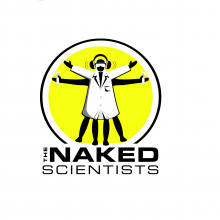
- How a Cd Player Works
How a Cd Player Works
with Philippa Law interviews Dr Lucy Green and Dr Julian Alwood
Phillipa - My mission for today is to find out how a CD player works. I know there's a laser in a CD, but I have no idea what one actually is. Let's ask Lucy Green from Cardiff University. What's the difference between a laser and a normal light?
Lucy - In a laser you have light given off in a beam where all the light waves are moving in exactly the same way and in the same direction. In a normal light, the light comes from all over the place. So a laser isn't a different substance, it's just that the substance is all moving in the same direction. As the light is all lined up in this special way, it allows you to point the light very directly at something. It can be used to point at information in a lecture and even for very precise laser eye surgery.
Phillipa - How does the laser in a CD player work?
Lucy - A laser, which actually stands for Light Amplification by Stimulated Emission of Radiation, it really does what is says on the tin. You have your source of atoms and you excited them by passing a current through them. When atoms are excited, they can lose that energy by giving off light. So in a laser, you have a source of atoms that are all concentrated in a small region and you excited them. All it takes is for one atom to spontaneously move to a lower energy and give off one photon of light. That photon can interact with another atom and cause that atom to give off another photon of light. Now you have two photons. These two photons can go on and excite two more atoms and give off even more light. This is a chain reaction, where one photon causes another atom to give off a photon of light. All that light is being trapped within a cavity, but when the intensity gets high enough it can break through part of the cavity and that's when you get your columnated laser beam.
Phillipa - What was Einstein's contribution to the invention of lasers?
Lucy - Einstein had two ways in which he contributed to the invention of lasers. Firstly, he made us think about light in this totally different way: rather than thinking about light as a wave, he made us think about it is packets of energy, or photons. Secondly, Einstein studied how large collections of atoms worked together. He realised that you could make excited atoms give off a photon of light. He also realised that that photon could force another atom to give off another photon of light, and so on.
Phillipa - So now I understand the physics of lasers, what else do I need to know? Here's Julian Alwood from the engineering department at Cambridge University.
Julian - When any machine records sound then it has to convert the sound wave that the ear experiences into some form that can be recreated. It's very difficult to envisage waves in the air, but when you stand at the end of a pier, you are used to seeing waves and water. Sometimes when you stand under the pier you can see a ruler which shows you the height of the tide. If you imagine a wave coming into the wall of the harbour and you see the place it comes to on the ruler going up and down, then that's a measure of the wave of the sea. When we record sound, we try to do exactly the same thing. We try to record how high the wave is, although in this case it's pressure in the air rather than the movement of water. When Edison made the first sound recording, he literally took the sound waves through a trumpet, which made a diaphragm vibrate and in turn made a little needle vibrate, which he recorded in marks on tin. After a while that turned into the vinyl long-playing record. This has a track in it. The vibrations on the track are a representation of the waves in the air. The problem is that if any dirt gets into the track then you hear that as well. This makes it very difficult to get a pure recording, which is why we now use digital recording most of the time. A digital recording is just like standing by the ruler on the harbour wall and writing down the numbers at regular intervals so that you can recreate the wave.
Phillipa - If you hold a CD up to a bright light you can see that there are all these different colours of light shining on it. Why is this? Let's speak to Dr Sally Day at University College London.
Sally - The CD itself is made of plastic and it has aluminium on it like a mirror. You may have seen at the edge of normal mirrors that you get lots of rainbow colours. This is from the light being split up like it is in a prism. Lines on the CD surface can break up the mirror and create all the colours.
Phillipa - If you look closely at the back of a CD, you can see those lines going round and round. What are they for?
Sally - In each of those lines are lots and lots of little dots where the aluminium is either slightly thicker or thinner in different regions. Those different regions mean that the light reflects slightly differently where there is a dot or no dot. The whole CD is covered in dots and no dots, and that's where all the information is.
Julian - The dots are put on the disc in a long spiral groove that would be three and a half miles long if you unwound it. The little dots are very small indeed. If they are up then it represents and one, and if it's down it represents and zero.
Sally - So a CD has an enormous amount of room for zeros and ones on it, and it can actually store six billion bits of binary data.
Phillipa - This must be where the laser comes in.
Julian - When you put the CD into the CD player, the disc starts spinning round and the laser shines onto the bottom of the CD. The information is stored in very very small regions of the CD with widths one thousandth of the width of a human hair. You can point the laser very precisely at this point. The light is reflected back down onto a little detector. That detector then detects either some light or no light depending on whether it's a nought or a one. The computer that reads the CD is then able to count the ones and zeros, convert them into numbers, which are the height on the ruler of the harbour wall. After 16 numbers, it has built up a number big enough to describe the wave accurately; in effect the height on the ruler. Each one of those represents the height of the wave once every one forty-four thousandth of a second. The circuitry of the computer converts that to a voltage. That voltage is then passed to a loud speaker where it is converted through a magnet into the movement of the loud speaker cone. In effect, the number describes the placement of the loud speaker cone, and that directly recreates the wave that hits your ears.
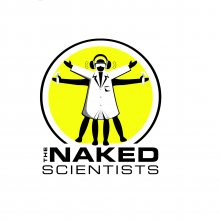
- The Science of Dinosaurs
The Science of Dinosaurs
with Dr David Norman, Director of the Sedgwick Museum of Earth Sciences, Cambridge University
David - I work on dinosaurs, but it's not geeky dinosaurs - it's the science of dinosaurs. This means that I look at things like their anatomy and their physiology. In order to do this, you really have to take the approach of a forensic scientist at the scene of a crime. What you have is a dead body and we have to some extent to try and bring it back to life. This can help you find out many interesting things about the history of life on earth.
Chris - The earth is very old: about 4500 million years! Where do dinosaurs fit into this?
David - The very first dinosaurs we know of were found in rocks that are 225 million years old during the late Triassic. The last ones (if you exclude birds, which are technically dinosaurs) lived about 65 million years ago. They fit into a period of time known as the Mesozoic.
Chris - When we watch films we ascribe to dinosaurs sounds, colours and ability to hear. Do we know if they could make sounds?
David - Yes we do, but only in a limited range of species; particularly those from North America known as duck-billed dinosaurs. These have very peculiar hollow crests on the top of their heads. It was thought at first that because they were connected to nasal passages they might be to do with an exaggerated sense of smell. That might have been the case, but acoustic analyses show that they are much more likely to be resonators. Indeed some are actually shaped like the tube of a trombone, which would certainly amplify sound. There are one or two skulls that have been very well preserved in three dimensions. CAT scan images of these skulls create a 3-D restoration. The internal cavities can be modelled and air can metaphorically be blown through them. Using this mechanism we see how it would have resonated. Obviously that's ignoring the fact that there would have been soft tissues too that would have modified the sound, but it at least gives us an idea. These types of dinosaurs make understandable sounds: that is understandable in terms of the biology of these creatures. The types of sound that they would make would have been very low frequencies, like a fog horn. These low frequencies can be transmitted across long distances and, unlike high frequencies, cannot be identified. These are animals that would have been preyed upon by things like Tyrannosaurus. By making a warning signal at a low frequency, the T-rex wouldn't know where the sound was coming from but all his mates would know that there was danger nearby.
Kat - What is your favourite dinosaur and why?
David - It would have to be a creature called the iguanodon. It's a very British dinosaur and it's also the reason that I'm a dinosaur expert. I started off as a dinosaur PhD student and was given the topic of this dinosaur. It was one of the first ever discovered in the 1820s and was studied by many people over the years. My research showed that there was quite a lot that we still didn't know about it.
Kat - Where in the UK is good for budding fossil hunters to start?
David - There actually aren't that many places. A good place is the Isle of Wight. The cliffs on the south coast yield dinosaur bones quite frequently. Please do it carefully though. If you find something, please take it to your local museum: it could be important.
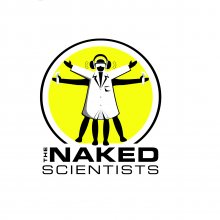
- Discovering Diets From Ancient Remains
Discovering Diets From Ancient Remains
with Dr Tamsin O'Connell, Department of Archeology, Cambridge University
Tamsin - I work on more recent dead bodies including both humans and other animals. By looking at the chemical composition of bones and tissue, we can find out what they ate, how they lived and how they moved around the environment. People in the past ate a lot more protein and fat, and ate fewer carbohydrates. This isn't too different to today's Atkin's diet! Our work is interesting because it gives us an insight into what animals were eating and how they lived their lives.
Chris - Your work has shown that animals literally are what they eat! Tell us how it works.
Tamsin - It works on tracing chemical signals from foods into your body tissues. When you eat, food gets broken down and molecules get re - synthesised as your hair grows; your skin grows; your bone grows, and so on. If you can find a marker that is in the food and is unchanged by the process of being incorporated into your body, you can then track things about people's food both now and in the past.
Chris - So what is the marker that you're using?
Tamsin - We are all made up of not that many elements: carbon, hydrogen and oxygen. These elements come in different forms and these forms are known as isotopes. This basically just means that there are two forms that weigh slightly different amounts. I can then trace the ratios of the different isotopes in your hair and look at where they came from.
Chris - How far back in time can you go?
Tamsin - As far back as the material is there to survive. If material is kept in good condition, I can go back a very long way. I have looked at mammoths back to 200 000 years. In hotter places, I would be lucky to go to 2000 years. Tooth enamel is the best because you can go back 15 million years, and has allowed us to look at many marine animals. We can find out things such as what fish animals were eating.
Kat - How can you use the information you get to tell us about societies?
Tamsin - How people gathered their food tells you a lot about how they spent their time and lived their lives. If they ate fish, they must have had technology such as nets and hooks. If they ate a lot of meat they would have needed technology and ability to hunt. If eating plants such as cereals then you must have horticulture skills, farming technology and the social structure in order to do that. So by looking at what they ate you can say quite a lot about their society.
Kat - Can you find evidence of things like drug use?
Tamsin - You can but not using the same technique I use. A number of people are looking for that. Effectively they look for the breakdown products of drugs. Sometimes you can find those molecules preserved. Some people have recently found drug breakdown products in mummy hairs.
Chris - What can your technique tell you about what people ate?
Tamsin - It works on quite a broad brush level. We can say things like 'were these people having lots of plants, and were they these certain types of plants?'. We can tell when people have been eating maize because it makes a big change in bone isotope signals. This has helped, especially in the Americas, to see when people were changing from the hunter-gatherer lifestyle towards farming. Another big change in human history is that up to about 13 thousand years ago we weren't eating fish. It seems that we were much keener on eating large terrestrial mammals. We seem to have exploited land animals first and then 30 000 years ago turned to alternative and smaller food sources. It does require a slightly finer degree of tool making ability.
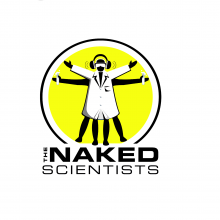
- Ancient Australian Crocodiles
Ancient Australian Crocodiles
with Dr Paul Willis, palaeontologist, and science reporter for ABC, Australia
Chris - Tell us about this new piece of information that tells us about crocodiles in Australia.
Paul - This is a fascinating find up in Gladstone in Queensland: that's more or less where the Tropic of Capricorn intersects the coast. They've got a couple of skulls of an early member of a group of crocodiles called the mikosuchines, which is a subfamily of crocodiles. This particular group of crocodiles are only found in Australia and the South West Pacific. The earliest members of the group are typical crocodiles with a flat broad snout. Later on in their evolution, about 25 million years ago, this particular group of crocodiles took on all of types of different shapes and sizes. There were hatchet-heads with huge fangs; terrestrial crocs that hunted on land; and even tiny ones that we think climbed trees and filled the goanna niche. All these belong to this one sub family. Finding an early member of these crocodiles is a really important find.
Chris - Am I right in thinking that crocodiles predate dinosaurs to a certain extent?
Paul - Actually they more or less got going at the same time as dinosaurs. The earliest crocodiles in the world occur at about 220-230 million years old. This is about the same time that the first dinosaurs were romping around in South America. If you saw an early crocodile walking down the street, you wouldn't recognise it as one of the ones Steve Erwin works with.
Chris - If they were around at the same time, why is it that whatever wiped out dinosaurs didn't wipe out crocodiles?
Paul - The crocodiles that actually made it through the K/T boundary were actually quite small: less than about 25 kilograms. When you're that small, there are lots of places in the environment in which you can hide. Crocodiles also have the ability to go into torpor, or slow down, which maybe the dinosaurs didn't have. So there are a few reasons why, although we'll never know for certain.
Chris - What about your book 'Digging Up Deep Time'?
Paul - I've spent a good part of my life working as a palaeontologist and did a PhD on ancient crocodiles. I then realised that people don't want to employ you just because you know a lot about dead crocodiles, and so I ended up in the media! 'Digging Up Deep Time' is about what its like to be a palaeontologist and how it is to be going around a digging up fossils in Australia. It also a story of the history of life through the eyes of Australian fossils. We even have the oldest turd in Australia! This was found on Kangaroo Island. The book is out in mid - March. The best way to get it is to go to the ABC shop online.

- How do eels move over land between bodies of water?
How do eels move over land between bodies of water?
Eels are interesting because they live part of their life in freshwater and part in sea water. They are born in the sea and migrate up into freshwater to grow. When they reach maturity, they then make the long journey back to the sea to spawn. In dry weather puddles can form, which leaves the eels no choice but to move across land. How does an animal that lives in water manage to do this? Eels can survive out of water for many hours, and part of the reason is because they have a very thick skin, which seems to cut down their rate of water loss and stop them from drying out. Fish are also able to use oxygen very sparingly and don't need an enormous amount of oxygen to keep them going. Eels have been found on land and they can navigate, although we don't know how. Their movement is quite like a snake. They like to go at night because it's cooler and they don't lose as much water.

- Were dinosaurs slow movers?
Were dinosaurs slow movers?
It depends on relative speed of predator and prey. If you imagine a t-rex, it is very big and very heavy. The legs have to take weight of the body at every stride and so they have to be strong enough to support them. Their legs were enormous and we can estimate how strong they were. It has shown that it is unlikely that they would have been able to run very fast: maybe about 20 miles per hour. That's a t-rex. The smaller light things like ostrich dinos, are light and long-limbed. They have the physical construction that would have allowed them to run faster. So it's all to do with scale. Smaller, lightly-built animals would have been able to run faster as long as their lungs were built in the appropriate way.
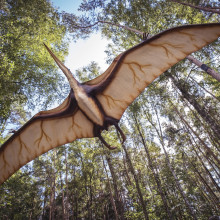
- How do they name dinosaurs and the periods of time that relate to dinosaurs?
How do they name dinosaurs and the periods of time that relate to dinosaurs?
They name dinosaurs after something distinctive. I named a dinosaur not so long ago because it had a big nose. We tend to use Latin or Greek words because of tradition.
We know how old they are because we use isotopes to date particular bands of rock, and thus infer from that how old the fossils are.

- Will man be come extinct like the dinosaurs?
Will man be come extinct like the dinosaurs?
We will eventually become extinct but we don't know when that will be. Most species live between 3 and 5 million years, so we are around for some time yet.

- I would like to tell my grandfather's country of origin from his DNA. Can I do that?
I would like to tell my grandfather's country of origin from his DNA. Can I do that?
You can tell ethnic group from DNA, but not the individual country. The only way I can think to do that is to look at his teeth, which sometimes trap geological signals. If these were laid down at the beginning of his life, you would have a fingerprint of where he came from.










Comments
Add a comment